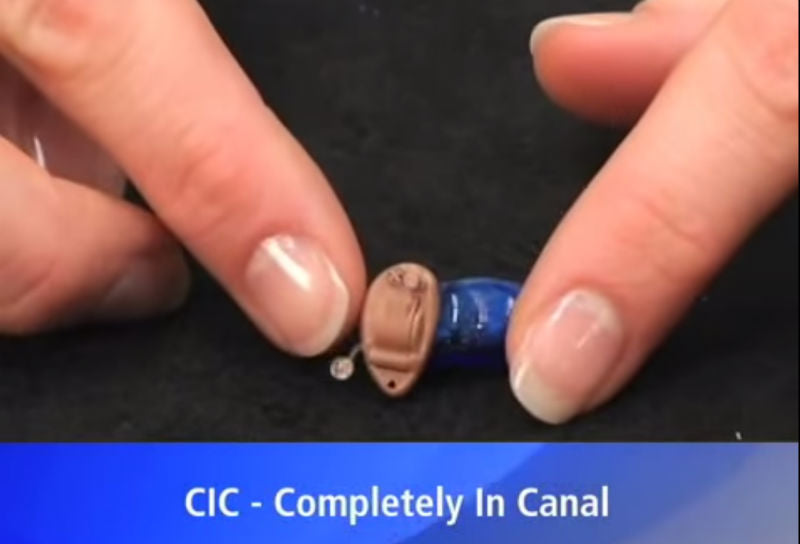Hearing aids are available in more styles and sizes than ever before thanks to the miniaturization of electronics and a new focus in the hearing aid industry on style and design.
The style you should choose is based on a couple of different factors.
1) The first factor you should look at is degree of hearing loss. The more hearing loss you have, the more power you will need from your hearing aid. Each hearing style is appropriate for different degrees of hearing loss.
2) The second factor is your cosmetic preference. Many consumers seek hearing aids that are not noticeable, while others don’t find this as important.
3) The final factor is dexterity ability. Hearing aids are small and must be inserted into and removed from your ear. Some styles are more suitable for dexterity issues.
Let’s take a look at In The Ear Hearing Aid styles.
First is the Completely In The Canal (CIC) Hearing Aid Style. These are the smallest hearing aids available and fit deep inside the ear canal. They’re ideal for mild to moderate hearing loss and offer high cosmetic appeal as they are barely noticeable when worn.
Two examples of affordable CICs are The Original iHear for just $249 each (click here now for more info), and the iHear Pro, just $399 each (click here now for more info).
Next is the Half Shell model. This fills up half of the outer bowl of the ear, and because of the slightly larger size than the CIC, it can host additional features. The half shell also works for mild to moderate hearing loss.
Lastly is the full shell model, also called In The Ear Hearing Aids (ITE). The full shell will fill up the entire outer bowl of the ear, and this size allows a maximum number of features. Because of their size and flexibility, they fit a wider range of hearing losses from mild to severe.
The next general hearing aid style is Behind The Ear Hearing Aids (BTE). BTE hearing aids actually sit behind the ear and route sound down into your ear canal via plastic tubing. 
BTEs come in a variety of styles to offer various features and fit varying degrees of hearing losses, from mild to severe and profound.
The first type of BTE we’ll take a look at is a traditional BTE coupled with a custom earmold. These are ideal for hearing loss from mild up until profound. 
The next type of BTE is called an Open Fit BTE Hearing Aid. This is the newest type of BTE hearing aids. The benefit of an open BTE is that, instead of a custom earmold, you have a thin plastic tubing routing sound into the ear canal coupled to a small dome. 
The benefit of this small dome is that it doesn’t block or occlude your ear canal, allowing a natural, open fit of the hearing aid.
Two great Open Fit examples are the $699 iHear Advantage (click here now for more info) and the iHear Blu Bluetooth hearing aid (click here now for more info).
Users like this type of hearing aid because it provides them amplification for their hearing loss and the ear canal remains open, allowing them to hear some sounds naturally. 
Here’s an example of an Open Fit BTE when inserted into the ear. The hearing aid sits nestled behind the outer earlobe.
The tiny plastic tubing routes sound down into the ear canal.
An Open Fit BTE offers high cosmetic appeal for users seeking a hearing aid that isn’t as noticeable.
If you're looking for great hearing aids at an affordable price, you can't go wrong with iHear.
We have styles to fit your needs and budget.
Each comes with a 30 day money back guarantee and 1 year warranty.
Buy a pair of iHear Advantage or iHear Blu, and get a 2 year warranty.
iHear: Hearing aids that are as good as the rest but cost significantly less.
Click here now to get an iHear that's right for you.










